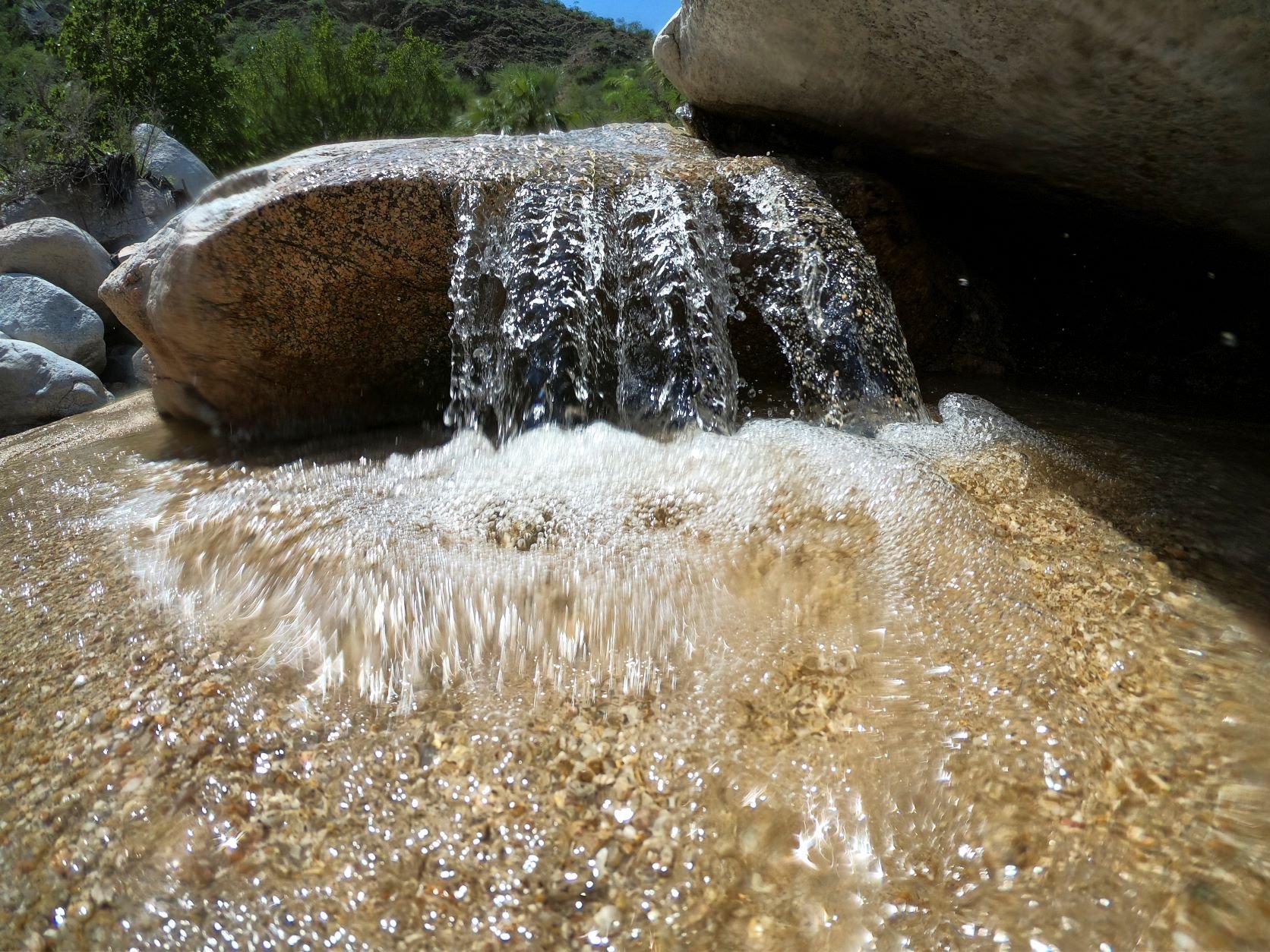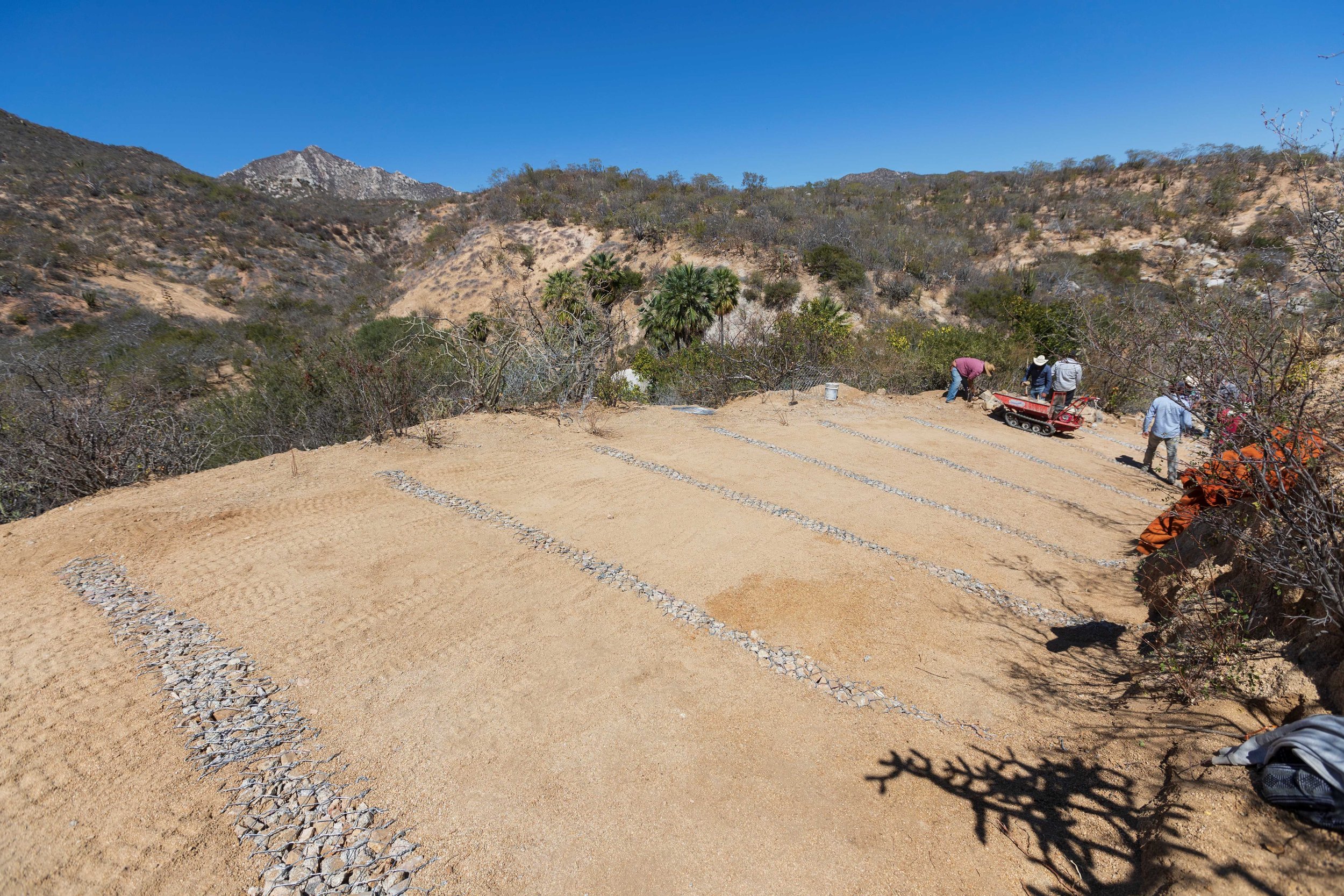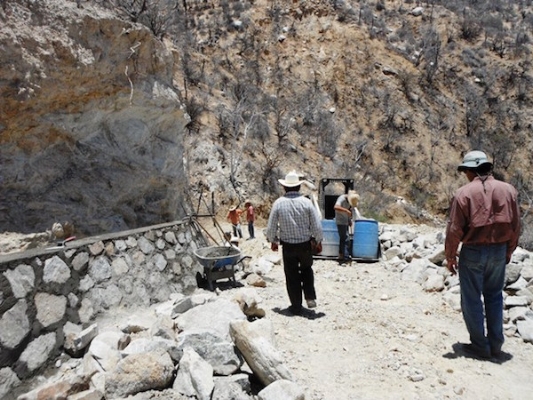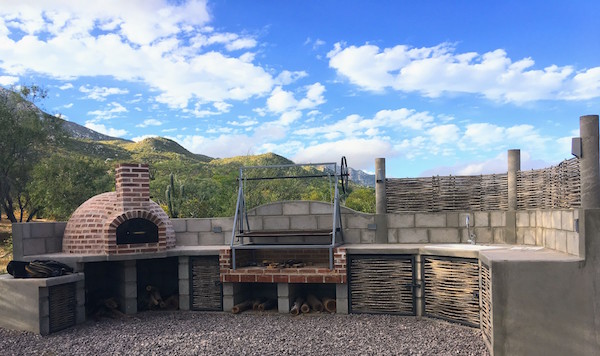Rancho Cacachilas is committed to being a model ranch where productive activities generate economic and community benefits that are in harmony with our unique environment.
Our goal is to manage, protect and enhance our lands while integrating scientific research, education and diverse economic activities such as ecotourism, animal husbandry, mineral exploration, and traditional artisanal projects. In addition to the care we take with our economic activities, we pay equal attention to maintaining and improving our property and the ecosystem. Our approach to architecture, road maintenance and watershed management is fundamental to our integrated commitment.
Special attention is paid to the nature of the land, the water and the weather. We are fully off-the-grid, we use solar energy, and we restrict our water consumption by implementing dry toilets, bucket showers and water retention systems.
Watershed Management









Designing and building soil and water retention projects is one of our primary activities as we aim to protect, conserve and replenish the aquifers of this region.
We work directly and indirectly with the federal (CONAFOR) and local agencies on many of our restoration projects.
We build water retention dams to slow down and infiltrate rainwater, and we construct other erosion control structures made with materials such as branches, rocks and gabions (rock and wire cages).
Throughout this process, we regularly test and quantify our natural springs and we manage our livestock to keep these water sources pure. Furthermore, our livestock management and permaculture practices are designed to improve soil performance and increase water infiltration.
Considering an average annual precipitation of 210 millimeters (8.3 inches) in our region, it is estimated that these dams infiltrate up to a total of 15,000 cubic meters (3.9 million gallons) for the entire property without counting the smaller structures. This process of water seeping into the ground — also called groundwater recharge — is the primary method for water to enter an aquifer and helps balance our authorized annual extraction amount. This water also benefits animals and vegetation as well as the downstream communities of El Sargento, La Ventana and San Juan de los Planes.
Through the International Community Foundation, our founder Christy Walton has supported many programs in BCS, including water research conducted by Niparajá. The vital importance of thoughtful freshwater management in this driest state of Mexico is beautifully illustrated in this two-minute 2013 Niparajá video. An English translation is provided below the video.
Erosion Control
Trained, local masonry workers and heavy-equipment operators from the surrounding communities of El Ancon, Los Tamales, El Sargento and La Huerta help us restore the old roads and trails throughout the ranches. As we implement long-term maintenance of our access ways, we look for ways to mitigate land destruction from seasonal storms. Many of our roads, for example, are designed to perform as erosion controls.
Architecture
The architectural styles that we use on the ranches are guided by designs that promote harmony among people, nature, landscapes and the environment. We use this holistic approach in new construction — such as campsites, trails and water retention structures — as well as in the renovation of existing historical ranches. Special attention is paid to the nature of the land, the water and the weather. We are fully off-the-grid, we use solar energy, and we restrict our water consumption by implementing dry toilets, bucket showers and water retention systems.
WATER DOES NOT COME FROM THE FAUCET, IT COMES FROM THE MOUNTAINS
In the driest state of Mexico,
in the city of La Paz, Baja California Sur,
water that flows from the faucet
is rain that has infiltrated the mountains.
Of the little rainwater that falls from the sky,
80% evaporates,
5% runs off into the sea,
and only 15%
infiltrates the aquifer,
from which comes all the water that we use in La Paz.
2% is used in industry,
35% in agriculture,
63% is used in the city.
This aquifer is our only source of water
and originates from the mountains.
Let's take care of our mountains because...
water does not come from the faucet,
it comes from the mountains
Visit Agua.org.mx, an interactive website, to learn more about water management in Mexico.


















